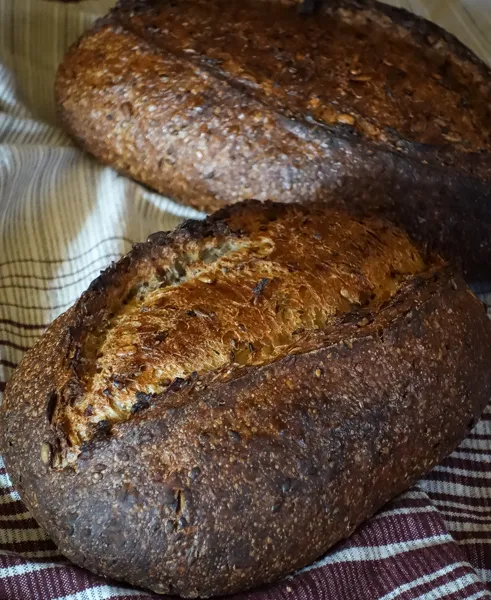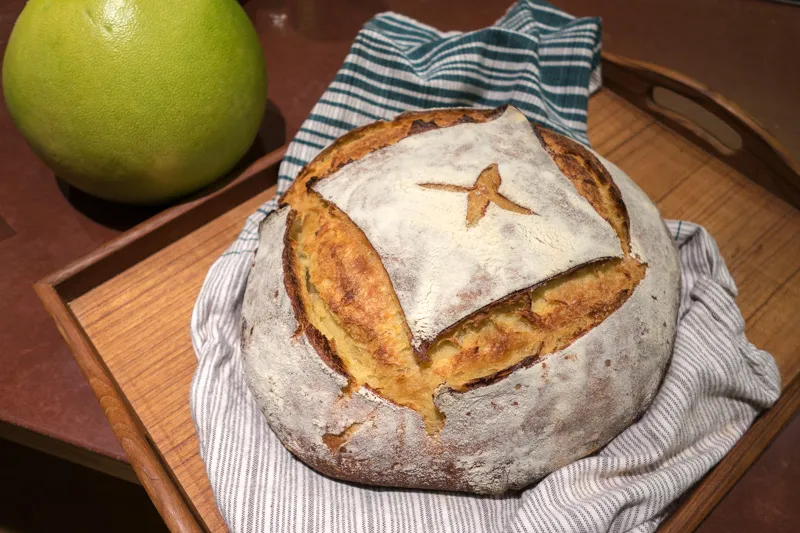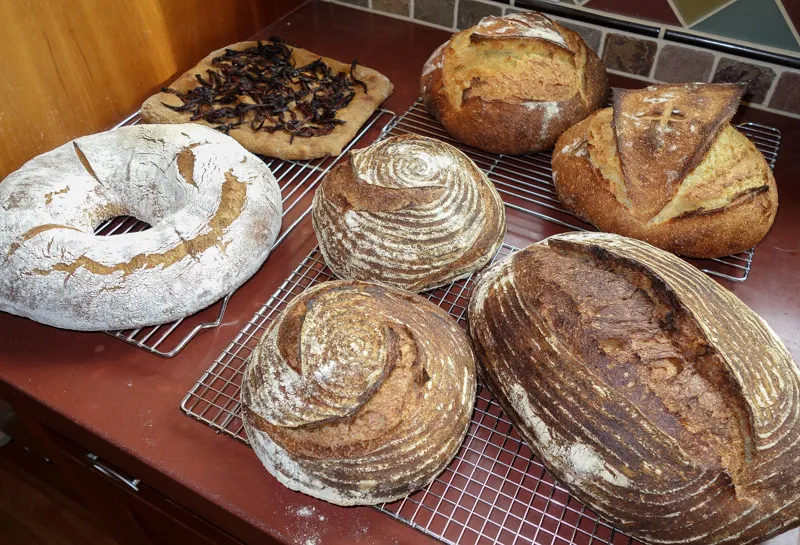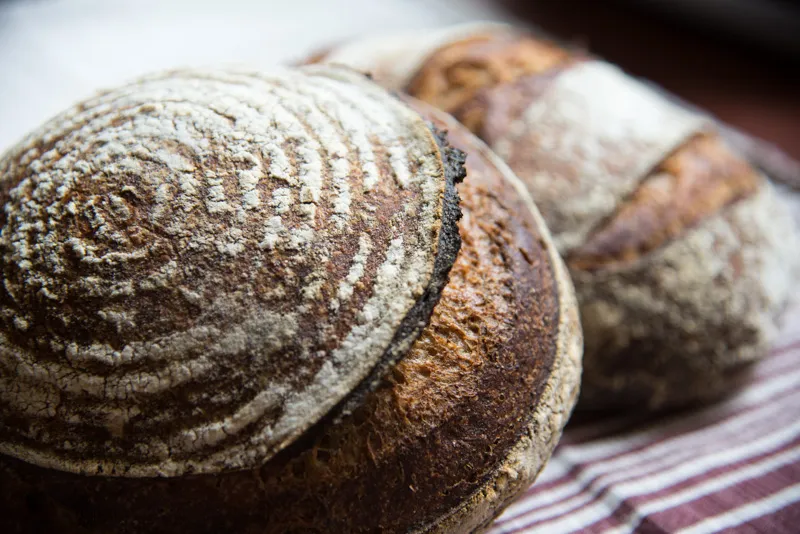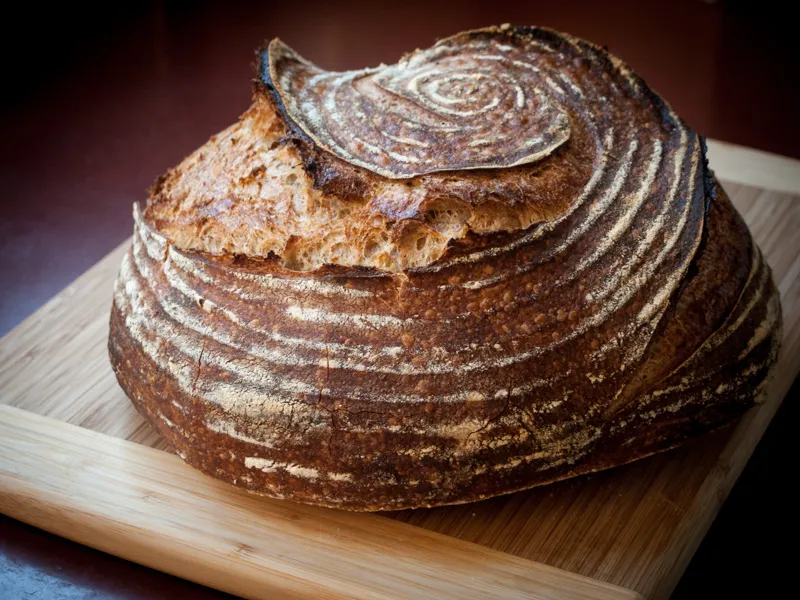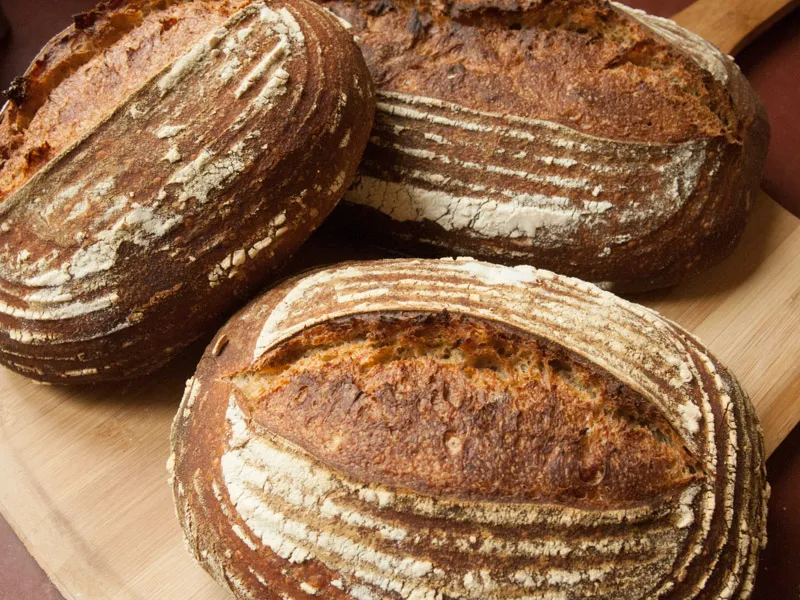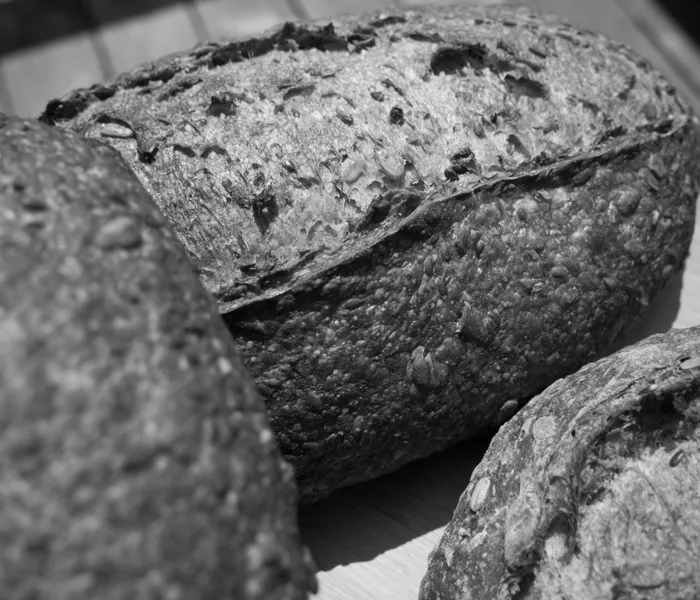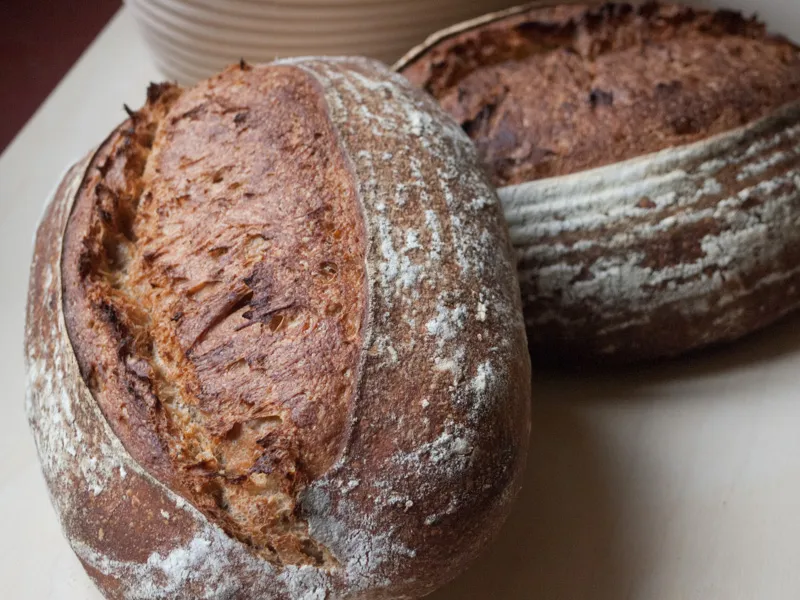A Trip to Altamura Revisited
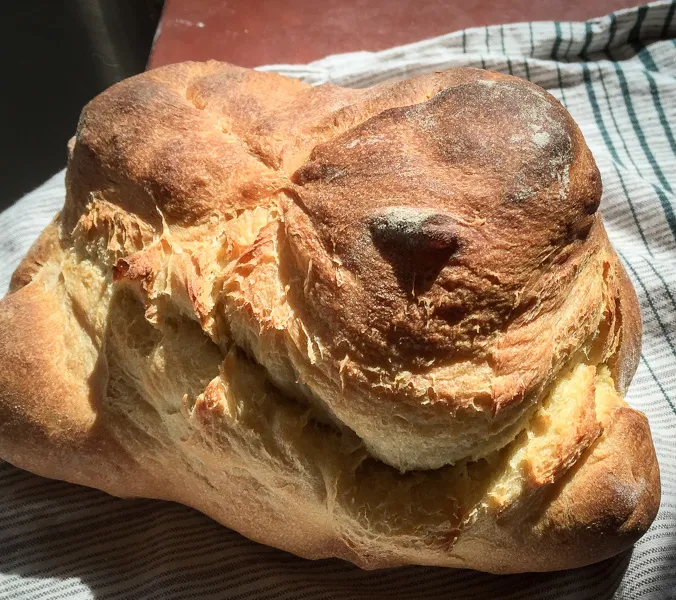
About a month ago I wrote about my attempts to reproduce a Pane di Altamura that I tasted on a visit to Italy. For the past few weeks I have been working on the formula and on my technique, and I’m happy to post my most recent results, which are much closer to the original look I was after. I researched the techniques a bit more and found some information I had missed the first time around. The key one was that I had not achieved sufficient gluten development.
